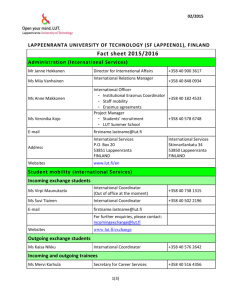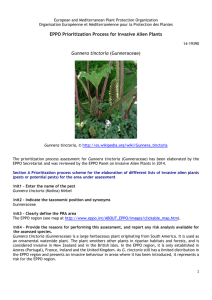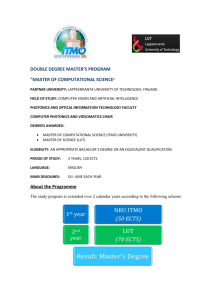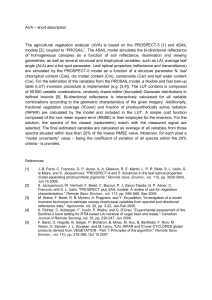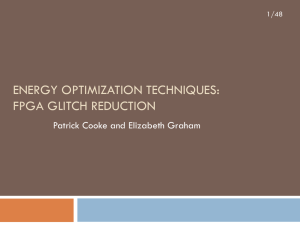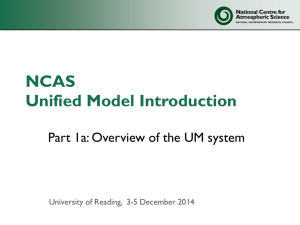Full Article
advertisement
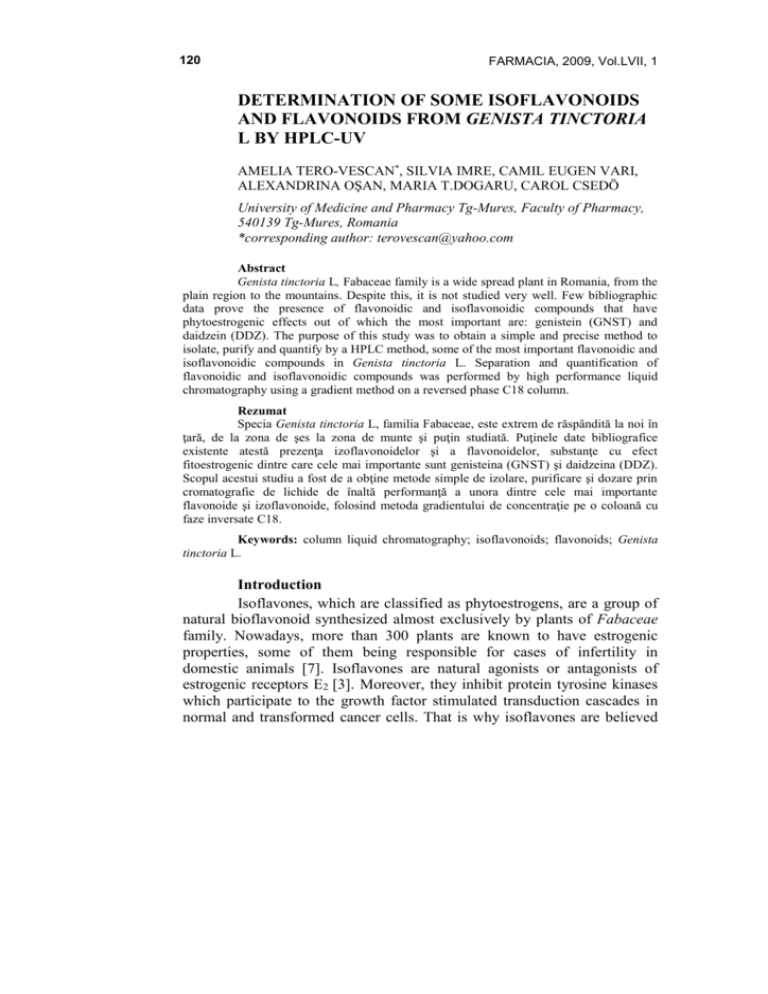
120 FARMACIA, 2009, Vol.LVII, 1 DETERMINATION OF SOME ISOFLAVONOIDS AND FLAVONOIDS FROM GENISTA TINCTORIA L BY HPLC-UV AMELIA TERO-VESCAN*, SILVIA IMRE, CAMIL EUGEN VARI, ALEXANDRINA OŞAN, MARIA T.DOGARU, CAROL CSEDÖ University of Medicine and Pharmacy Tg-Mures, Faculty of Pharmacy, 540139 Tg-Mures, Romania *corresponding author: terovescan@yahoo.com Abstract Genista tinctoria L, Fabaceae family is a wide spread plant in Romania, from the plain region to the mountains. Despite this, it is not studied very well. Few bibliographic data prove the presence of flavonoidic and isoflavonoidic compounds that have phytoestrogenic effects out of which the most important are: genistein (GNST) and daidzein (DDZ). The purpose of this study was to obtain a simple and precise method to isolate, purify and quantify by a HPLC method, some of the most important flavonoidic and isoflavonoidic compounds in Genista tinctoria L. Separation and quantification of flavonoidic and isoflavonoidic compounds was performed by high performance liquid chromatography using a gradient method on a reversed phase C18 column. Rezumat Specia Genista tinctoria L, familia Fabaceae, este extrem de răspândită la noi în ţară, de la zona de şes la zona de munte şi puţin studiată. Puţinele date bibliografice existente atestă prezenţa izoflavonoidelor şi a flavonoidelor, substanţe cu efect fitoestrogenic dintre care cele mai importante sunt genisteina (GNST) şi daidzeina (DDZ). Scopul acestui studiu a fost de a obţine metode simple de izolare, purificare şi dozare prin cromatografie de lichide de înaltă performanţă a unora dintre cele mai importante flavonoide şi izoflavonoide, folosind metoda gradientului de concentraţie pe o coloană cu faze inversate C18. Keywords: column liquid chromatography; isoflavonoids; flavonoids; Genista tinctoria L. Introduction Isoflavones, which are classified as phytoestrogens, are a group of natural bioflavonoid synthesized almost exclusively by plants of Fabaceae family. Nowadays, more than 300 plants are known to have estrogenic properties, some of them being responsible for cases of infertility in domestic animals [7]. Isoflavones are natural agonists or antagonists of estrogenic receptors E2 [3]. Moreover, they inhibit protein tyrosine kinases which participate to the growth factor stimulated transduction cascades in normal and transformed cancer cells. That is why isoflavones are believed FARMACIA, 2009, Vol.LVII, 1 121 to inhibit the formation of tumors, especially those which are related to the hormonal balance of the body (breast cancer, ovaries cancer, prostate cancer). Isoflavonoids also diminish the symptoms of menopause such as osteoporosis and cardiovascular diseases [1, 6]. Genista tinctoria L. contains important quantities of phytoestrogens such as: genistein (GNST), genistin, daidzein (DDZ), daidzin (DDIN), formononetin, ononin [2, 8]. Most of the pharmacologic studies use as source of phytoestrogens, soy (Glycine max) or red clover (Trifolium pratense), but an alternative source can be Genista tinctoria L [5]. The most used method for the quantification of isoflavonoids, besides gas chromatography and capillary electrophoresis, is high performance liquid chromatography [4]. The purpose of this study was to quantify GNST, DDZ, DDIN and luteolin (LUT) content from indigen Genista tinctoria L. - - - - Materials and methods Genista tinctoria L was harvested during flowering from three areas: Deda and Gurghiu (Mures county), Izvorul Mureşului (Harghita county) in June 2008; Chemicals and reagents: GNST, DDZ and DDIN were purchased from Chromadex INC, Germany. LUT was purchased from Fluka. The solvents used: methanol (Merck), acetonitrile (Merck), acetic acid (Merck) and phosphoric acid (Merck) were HPLC quality and reagent-grade water was obtained from a Milipore Direct Q system; HPLC system: Merck-Hitachi equipped with a binary pump (L7100), DAD detector (L-7455), autosampler (L-7200), column oven (L-735) and degasor (L-7612); Chromatographic conditions: The isoflavonoids were separated on a 5 µm RP 18 LiChrospher column (250 x 4 mm I.D., Merck, Germany), equipped with a RP 18 LiChrospher precolumn, by gradient elution. The mobile phase solvents were: solvent A, a mixture of water:acetic acid – 99.9:0.1, and solvent B, a mixture of acetonitrile:acetic acid – 99.9:0.1. In order to achieve a good resolution, the following gradient was applied: 0-35 min: 10% to 35 % B in A (liniar gradient) The flavonoid LUT was separated by gradient elution using solvent A (phosphoric acid 15 mmol in water) and solvent B (acetic acid 0.1% in acetonitrile) with the following liniar gradient 0-10 minutes 40-80% B in A 122 FARMACIA, 2009, Vol.LVII, 1 A re-equilibration period of 10 min was used between individual runs Elution was carried out at room temperature with a flow rate of 1.5 mL min-1 and detection at λ=262 nm Injection volume was 20 μl Sample concentration was determined by the external standard method Preparation of stock solutions (1 mg/mL) was made by dissolving the substances in methanol. GNST, DDZ, DDIN and LUT stock solutions were further diluted with methanol in order to obtain the working solutions ranging from 1-10 g/mL Sample preparation: 300 mg dry plant powder was sonicated with 200 mL methanol in an ultrasonic-bath for 4 hours at room temperature. Methanolic extract was concentrated under vacuum and than redisolved in 100 μl mobile phase Extraction efficiency: To a quantity of 300 mg dry Althaea folium powder, free from the studied isoflavonoids and flavonoids, a known quantity of isoflavonoids mixture and LUT, respectively, was added and extracted using the same method as described for Genista tinctoria L. sample. In the same time a standard solution of isoflavonoids mixture and luteoline, respectively, with the expected concentration in the final extract was injected. Separately, an Althaea officinalis dry plant folium was extracted in order to demonstrate that it does not contain GNST, DDZ, DDIN or LUT. - - - Results and discussion Determination of the four compounds in the same run was impossible because of their different chromatographic behavior on the RP 18 stationary phase used in the study. The optimized chromatographic conditions were: solvent A (water:acetic acid – 99.9:0.1) and solvent B (acetonitrile:acetic acid – 99.9:0.1) with the gradient: 0-35 min: 10% to 35 % B in A (liniar gradient), but LUT presented an inefficient chromatographic peak, as it can be seen in Figure 1. That is why two different methods were developed: one for determination of isoflavonoids and one for the determination of LUT. Determination of GNST, DDZ and DDIN from Genista tinctoria L. Calibration curve: on 1-10 g/mL domain, the dependence between peak area and concentration was liniar with the determination coeficient R2 FARMACIA, 2009, Vol.LVII, 1 123 >0.99 for each of the three components. The medium equation of the calibration curve was A 3,59510-5(± 0,71310-5) *c - 0.0253(± 0.714) for genistein (GNST); A 2,513 10-5(± 0.69310-5)*c + 0.3822(±1.1561) for daidzein (DDZ) and A 3,595 10-5 (± 0.78210-5) *c + 0.0253(±0.0122) for daidzin (DDIN). In these conditions GNST, DDZ and DDIN were identified by the retention times: 31.2 (GNST), 9.5 (DDZ), 24.3 (DDIN) minutes (Figure 2). Figure 1 Chromatogram of DDIN 10 μg/mL, DDZ 10 μg/mL, LUT 10 μg/mL and GNST 10 μg/mL mixture Figure 2 Chromatogram of the mixture of DDIN 10 μg/mL, DDZ 10 μg/Ml and GNST 10 μg/mL standard solutions 124 FARMACIA, 2009, Vol.LVII, 1 Izoflavonoid concentration was determined by analizing 3 samples extracted independently, for each area of growth and calculated by the medium calibration curve (Tables I- III). Chromatogram of a Genista tinctoria L. extract is presented in Figure 3, pointing out the peak areas of DDIN, DDZ and GNST. Figure 3 Chromatogram of Genista tinctoria L. extract. Peak areas of DDIN, DDZ, GNST Table I GNST concentration of Genista tinctoria L. samples GNST mg/100 g dry plant Deda Sample Concentration no. (mg %) P1 50.41 P2 47.05 P3 52.78 Result 50.08±2.35 CV % 4.69 Gurghiu Sample no. P1 P2 P3 Result CV % Concentration (mg %) 49.25 42.60 48.75 46.86±3.02 6.45 Izvorul Mureşului Sample Concentration no. (mg %) P1 46.10 P2 56.28 P3 51.28 Result 51.22±5.09 CV % 9.90 Table II DDZ concentration of Genista tinctoria L samples DDZ mg/100 g dry plant Deda Sample Concentration no. (mg %) P1 7.41 P2 8.16 P3 7.16 Result 7.58±0.42 CV % 5.60 Gurghiu Sample no. P1 P2 P3 Result CV % Concentration (mg %) 8.53 8.05 8.11 8.23±0.21 2.60 Izvorul Mureşului Sample Concentration no. (mg %) P1 7.78 P2 6.88 P3 6.30 Result 6.98±0.60 CV % 8.70 125 FARMACIA, 2009, Vol.LVII, 1 Table III DDIN concentration of Genista tinctoria L samples DDIN mg/100 g dry plant Deda Sample Concentration no. (mg %) P1 8.25 P2 9.45 P3 7.78 Result 8.42±0.61 CV % 7.27 Gurghiu Sample no. P1 P2 P3 Result CV % Concentration (mg %) 7.08 8.73 7.60 7.60±0.45 5.99 Izvorul Mureşului Sample Concentration no. (mg %) P1 7.05 P2 8.16 P3 7.60 Result 7.60±0.45 CV % 6.00 Determination of LUT from Genista tinctoria L Calibration curve: on 1-10 g/mL domain the dependence between peak area and concentration was linear with the determination coefficient R2 >0.99. The medium equation of the calibration curve was A 5.460 10-5(± 1.07310-5) *c - 0.2604(±0.9871). In these conditions LUT was identified at the retention time of 2.40 minutes (Figure 4). Figure 4 Chromatogram of LUT 10 μg/mL standard solution LUT concentration was determined by analyzing 3 samples extracted independently for each area of growth and calculated by the medium calibration curve (Table IV). Chromatogram of a Genista tinctoria L extract is presented in Figure 5, pointing out the peak area of LUT. 126 FARMACIA, 2009, Vol.LVII, 1 Figure 5 Chromatogram of Genista tinctoria L extract. Peak area of LUT Table IV LUT concentration of Genista tinctoria L samples LUT mg/100 g dry plant Deda Sample Concentration no. (mg %) P1 4.26 P2 4.63 P3 3.66 Result 4.18±0.39 CV % 9.50 Gurghiu Sample no. P1 P2 P3 Result CV % Concentration (mg %) 4.66 5.33 4.33 4.77±0.41 8.70 Izvorul Mureşului Sample Concentration no. (mg %) P1 4.65 P2 5.41 P3 4.26 Result 4.77±0.48 CV % 10.00 Extraction efficiency The extraction efficiency was over 60% and was determined comparing the signals between extracted spiked samples and standard solutions to the expected concentrations in the final extract of the spiked samples. In conclusion, by comparison to literature data, Genista tinctoria L. from the three Romanian areas presents higher content in GNST, DDZ and LUT and a significant lower content in DDIN as it can be seen in Table V. FARMACIA, 2009, Vol.LVII, 1 127 Table V Isoflavonoid content of Genista tintoria L. from the three areas in Romania compared to literature data Isoflavonoid Genista tinctoria L. from Romania Literature data [2, 4] Difference % GNST 28.85 45.964.21 mg% 32.70.13 mg% DDZ 17.56 6.550.27 mg% 5.40.07 mg % DDIN -82.80 7.360.24 mg% 42.80.21 mg% LUT 93.42 4.560.3 mg% 0.30 0.01 mg% Conclusions This studies describe a liquid chromatographic analysis of flavonoid content of Genista tinctoria L. from three different Romanian areas. The developed chromatographic methods allow the quantification of genistein (GNST), daidzein (DDZ), daidzin (DDIN) and luteolin (LUT) with a good recovery and a relatively short run-time. The results indicate a higher content in GNST, DDZ and LUT and a significant lower content in DDIN, in comparison to the literature data. 1. 2. 3. 4. 5. 6. 7. 8. References Bruneton J., Pharmacognosy-Phytochemistry, Medicinal Plants, Ed. Intercept Ltd, London, 1999, 324-325 Franke A., Custer L., Quantitation of Phytoestrogens in Legumes by HPLC, J. Agric Food Chem, 1994, 42, 1905-1913 Kuiper, G.G., Lemmen J.G., Carlsson B., Corton J.C., Safe, S.H., van der Saag, P.T., van der Burg, B. and Gustafsson, J.A., Interaction of estrogenic chemicals and phytoestrogens with estrogen receptor beta, Endocrinology, 1998, 139, 422-463 Luczkiewicz M. and Glod D., Callus Cultures of Genista Plants in Vitro Material Producing High Amounts of Isoflavones of Phytoestrogenic Activity. Plant Sci., 2003, 165, 1101-1108 Polkowski, K. and Mazurek, A.P., Biological properties of genistein. A review of in vitro and in vivo data. Acta Pol Pharm, 2000, 57(2), 135-55 Santell R.C., Chang Y.C., Nair M.G. and Helferich W.G, Dietary Genistein Exerts Estrogenic Effects Upon the Uterus, Mammary Gland and the Hypothalamic/Pituitary axis in Rats. J Nutr., 1997, 127(2), 263-269 Verdeal K., Ryan D., Naturally-occurring estrogens in plant foodstuffs: a review, J. Food Prot., 1980, 42, 577-583 ***, Phytochemical Dictionary of the Leguminosae ILDIS (International Legume Database and Information Service), vol 1, Plants and their Constituents, Ed Chapman &Hall, Londra, 1992, 327-328. Manuscript received: 03.09.2008
